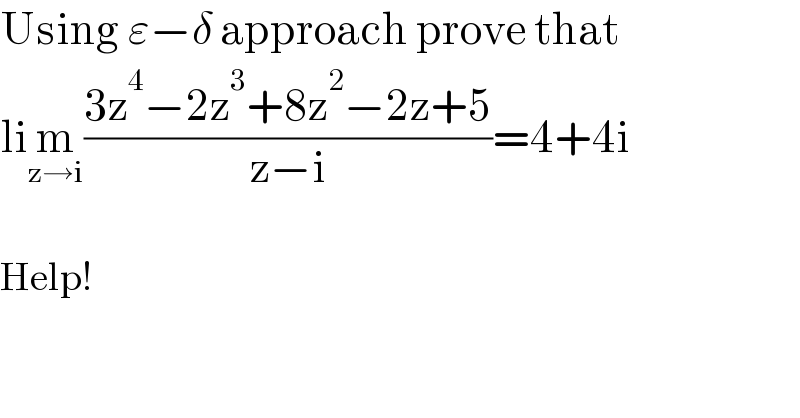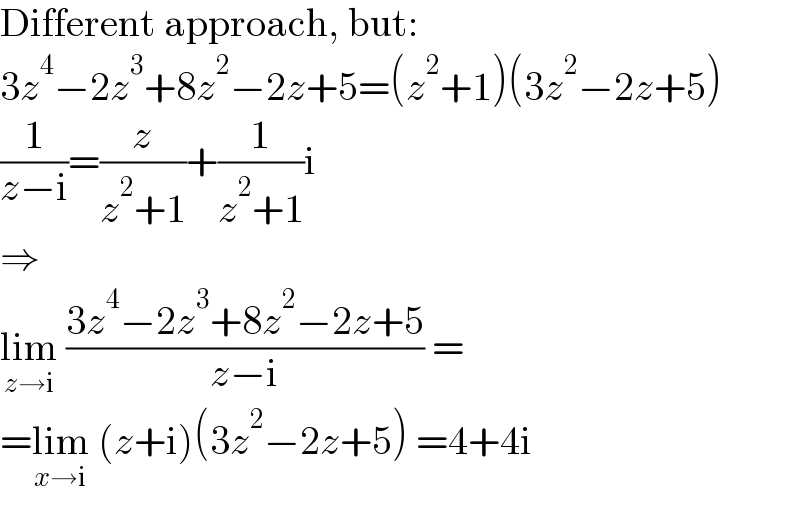
Question and Answers Forum
Question Number 185243 by Mastermind last updated on 19/Jan/23

Commented by Frix last updated on 19/Jan/23

Commented by Mastermind last updated on 19/Jan/23

Commented by Frix last updated on 19/Jan/23

Answered by 123564 last updated on 19/Jan/23

Commented by Mastermind last updated on 20/Jan/23

